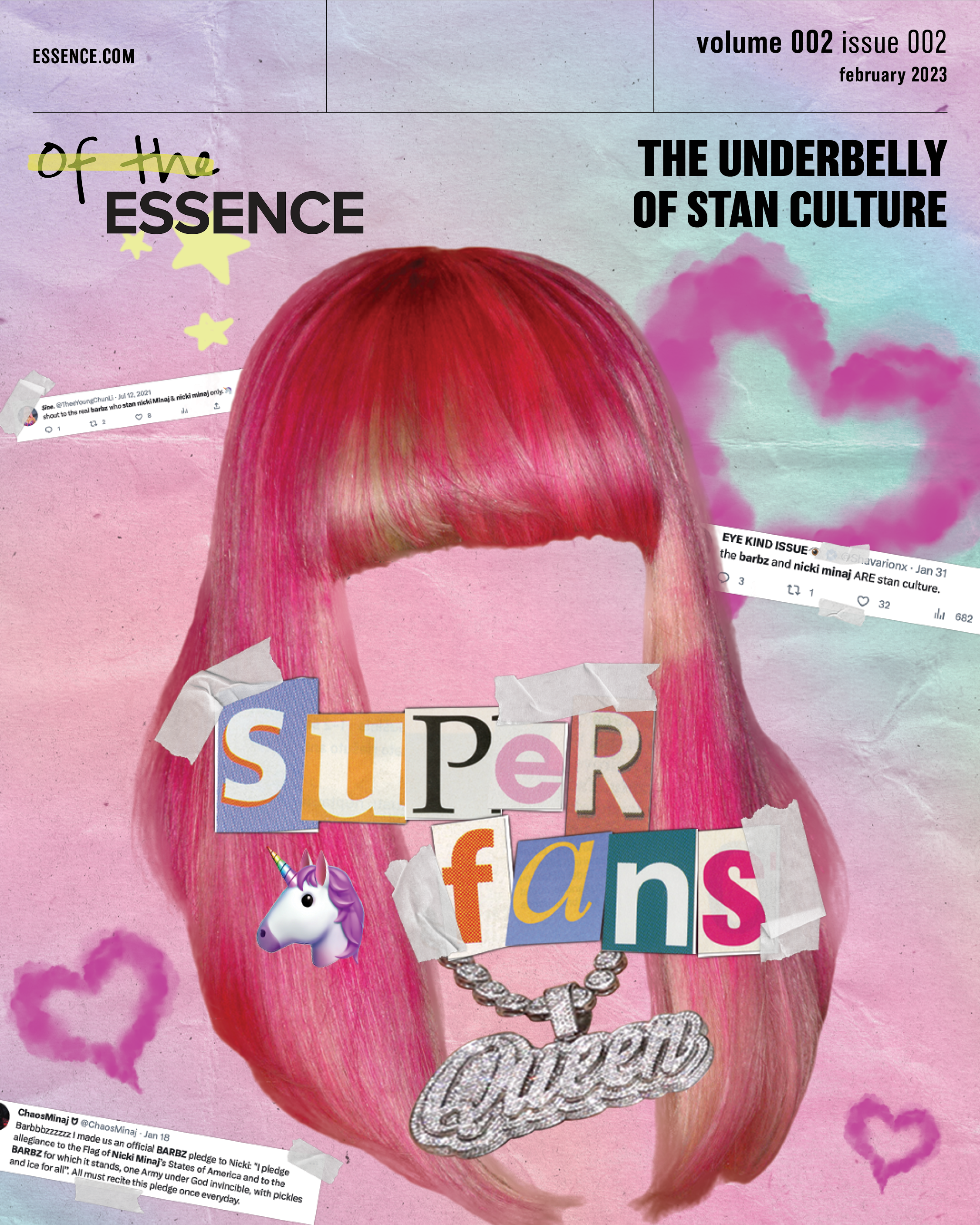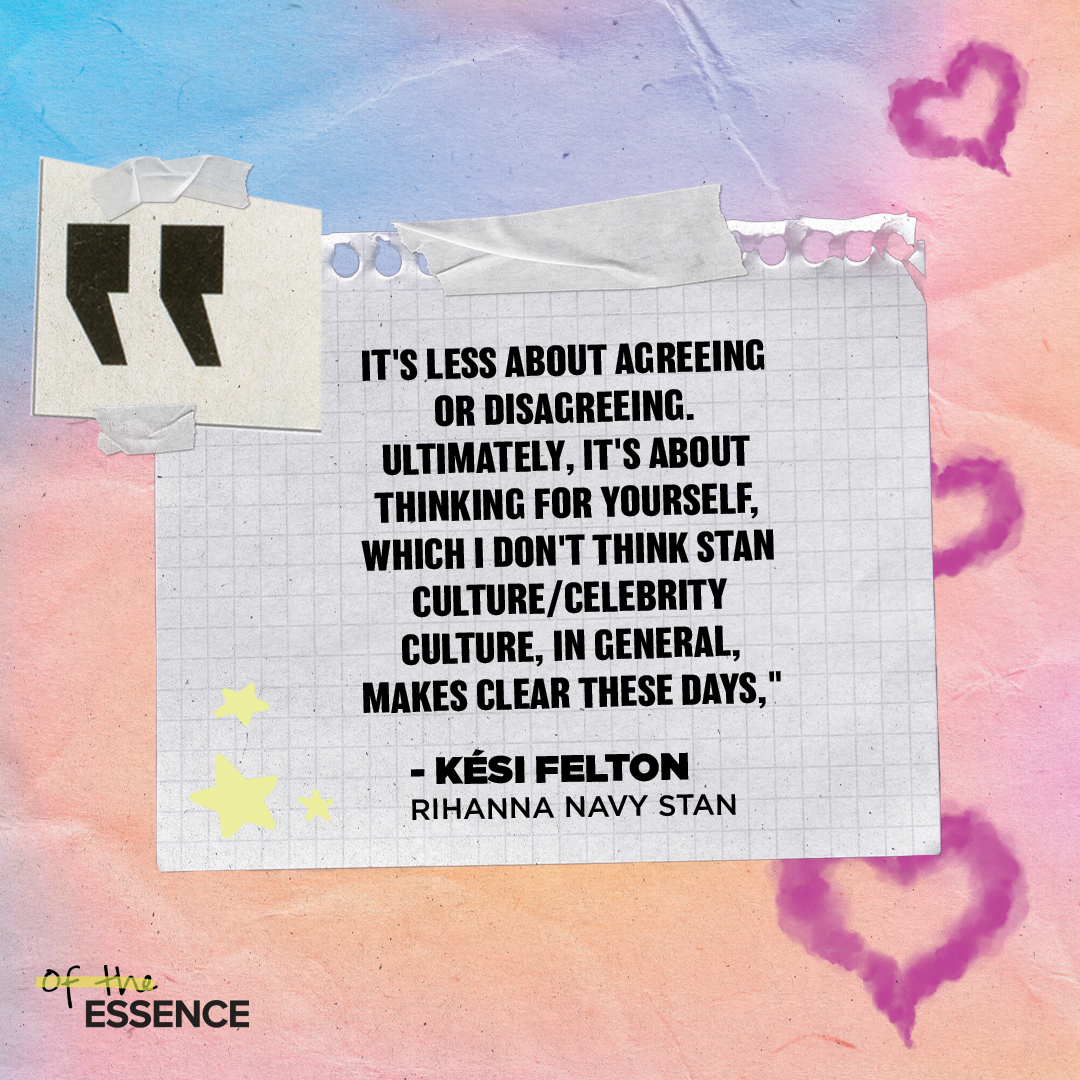The Underbelly Of Stan Culture: The Psychology, Legality, Of The Stan Experience
Fandom culture has become commonplace online, especially on platforms like Twitter. Some users are casual fans, occasionally posting about their favorite song, artist, celebrity, film, or TV show. In contrast, others create their online personas solely to stan the thing or person they love to the point of obsession.
Stan, a word that combines stalker and fan, entered pop culture’s lexicon in 2000 thanks to rapper Eminem’s song, “Stan.” The track and video portrayed a young man named Stan, dangerously obsessed with Eminem.
In the present era, stanning has become a regular part of pop and online culture. Online communities celebrate, praise, and emulate music stars such as Beyoncé, Mariah Carey, Nicki Minaj, Rihanna, Cardi B, and Megan Thee Stallion. There’s a spectrum of stan culture where being a fan can be harmless, but on the extreme side, it can lead to glorifying public figures to harassing and doxing those who point out their failings or don’t share the same admiration for them online.
According to attorney Tyler D. Bailey, online harassment or cyber harassment includes any online expression (emails, social media posts, blogs, etc.) targeted at a specific person that causes the individual substantial emotional distress, while doxing is the public distribution of a person’s personal information via the internet. “A common example of doxing is when an individual exposes someone’s private or personal information on social media motivated solely to cause that person harm, such as cyberstalking, bullying, etc.,” Bailey adds.

These types of connections that can lead to extreme outcomes of online harassment and doxing are called parasocial relationships. Parasocial relationships are one-sided relationships that admiring fans have with public figures (celebrities, organizations such as sports teams, politicians, royalty, influencers, etc.). Donald Horton and R. Richard Wohl coined the psychological concept of parasocial relationships in 1956 to describe the typical social relationship media users form with media figures.
“Humans form attachments to media figures in similar ways as we do with people in our lives [through] familiarity or attraction. We seek to learn more about the person, formulate our opinions about what we’ve learned, and use those opinions and emotions to guide interactions with them,” psychologist Dr. Alfie Breland-Noble says.
Though the psychological concept was established in 1956, humans’ urge to connect para socially is natural, even stans. According to psychotherapist K. Pierre, these relationships are common in that they have existed for as long as public figures have.
To better understand the inner workings of these online stan bases, ESSENCE spoke to stans who’ve had varying experiences, from finding community with fellow stans to leaving a stan base due to shackling groupthink, online harassment, and doxing.
Often, stan culture, especially the negative aspects, is seen as something only for music fans and comes with a scarlet S, broadly labeling all music fans as extreme due to the actions of diehard stans. “Other aspects of entertainment, such as sports, tv/film, etc., do not get the same scrutiny,” says Dionté Williams, a “Lamb,” a stan of Mariah Carey. But Williams, who partakes in stan culture for the community, understands how stans get their bad reputation due to the extreme outcomes of online harassment and doxing. “Being a stan has its perks and fun, but there is a point where one has to check their words and actions. The love and admiration you have for anything in life should not yield violence or hatred of any form,” she adds.
The communal aspects of stan culture are the common allure for many stans, including Rihanna fan Kési Felton. Around ten years old, Felton joined The Navy when the 2007 Good Girl Gone Bad record took the charts and radio airwaves by storm. But now that she’s older, her views on stan culture evolved past notions of groupthink and began incorporating critical analysis.
“It’s become difficult to participate in stan culture uncritically. For Rihanna, specifically around class and becoming a billionaire,” she says. “It’s hard to reconcile the significance of her reaching that milestone … [while] being aware of the systems and exploitation required to reach that point.”
“It’s less about agreeing or disagreeing. Ultimately, it’s about thinking for yourself, which I don’t think stan culture/celebrity culture, in general, makes clear these days,” Felton adds.

According to psychotherapist Pierre, these parasocial relationships become concerning when they cause distress in someone’s life, including others, via doxing and online harassment. Some stans understand the dangers of online harassment and doxing within their respective stan bases all too well, taking precautions to remain anonymous with online personas. For that reason, some stans have agreed to speak with Essence on the condition of anonymity.
One BeyNika stan, a fan of Beyoncé and Nicki Minaj, was drawn to stan culture for the enhanced experience it brought to their love of pop culture. “It gives you a chance to connect to the music uniquely. I get to engage in pop culture alongside [other stans]. The music, the platform, and the promotion become an experience and not just something to consume,” they tell Essence.
But for this BeyNika stan, being a fan of such mega stars has its downsides. “I don’t like when it gets toxic. At best, that means when different standoms are fighting and begin to disrespect each other, but at worst, it can mean doxing,” they say.
In 2020, writer Wanna Thompson got a taste of the online harassment from stan group the Barbz and a direct message from Nicki after critiquing the rapper’s musical direction. One of the most recent and infamous instances of a stan base doxing a user occurred last year when YouTube personality Kimberly N. Foster made a now-deleted tweet about Nicki Minaj’s character. In response, Barbz coordinated harassment on Twitter and, through texts, sent threats toward her and her nieces. Foster has since begun seeking legal recourse against stans that harassed and doxed her.
However, suing stan accounts is more complicated as most are anonymous online personas. “In theory, one could bring a civil lawsuit against a stan account as a John or Jane Doe. However, they would ultimately need to find the identity of the stan account to be in a position to hold them accountable and receive any monetary relief,” Baily tells Essence.
For an ex-Barb turned Hottie, they’ve been a part of stan Twitter for about 12 years, starting in middle school. They provide insight into what draws stans in, how stans coordinate harassment, and where they drew the line.
What enticed them to stan culture was how some celebrities show appreciation to their dedicated fans, like winning tickets to see Nicki Minaj open up for Britney Spears. But when they began college in 2014, they took a step back from stan Twitter, leaving behind the Barbz domain of the TL. It was a mix of a new chapter in life and a full plate combined with the pressures to succumb to the groupthink of the stan base, doxing, and online harassment that led to their exit.
“To be liked and favored on stan Twitter, you must be blind and damn near delusional about your fave if you want to be popular. There’s [no] room for common sense anymore. [For example,] the idea that multiple artists of the same genre can’t exist because it’s too much without fans pitting them against each other and forcing issues and rivalries,” they say.
The extreme outcomes of standom, such as online harassment and doxing, are something they agree are concerning and can lead one to step away from online stan culture.
“Doxing is one of our biggest problems. I have watched fan bases leak phone numbers, email addresses, and even home addresses to bully and intimidate someone on the TL. Some stans start these mass group texts where they organize and discuss what’s being said on the TL,” they tell ESSENCE.
“Wait a bit, and you will start to see the narrative they created spread like wildfire. They will use the same talking points to harass and bully a person, and then when accus[ed] of targeted harassment, they play dumb or straight up tell you that ‘you should’ve kept your mouth shut,'” the add.
Over the past few years, these behaviors have increased. Dr. Aflie Breland-Noble ascertains that social distancing and isolation during the height of the COVID-19 pandemic created the perfect storm for these interactions to thrive in new ways as users sought more connection online. “It stands to reason that fans and others might form an attachment to glamorous people and their fabulous lives as a distraction from their challenges,” she says.
According to Dr. Alfie Breland-Noble, an example of this is when a person of color becomes successful and famous. She explains it may be easy for fans to relate to that person overcoming obstacles and representation as one of a few people like them in a particular field, like Rihanna becoming a billionaire.
Being aware of the underbelly of online stan culture is the first step. But knowing your legal rights if and when you find yourself on the receiving end of a stan base’s harassment or doxing is essential. According to attorney Bailey, the best legal way to protect yourself from online harassment is to refrain from sharing your sensitive personal information online with others. Baily recommends that if you’re the subject of doxing and online harassment, you should gather as much evidence as possible (screenshots of posts, copies of emails, etc.) and present it to law enforcement.
“Hopefully, the law enforcement agency will take the online harassment seriously, investigate, and prosecute the perpetrator under state or federal law. That would also make any related civil lawsuit arising out of the online harassment against the perpetrator easier to prove if it’s in conjunction with a criminal prosecution,” Bailey tells Essence.
Although a criminal case can help with a civil case, even if a cyber harasser’s conduct doesn’t result in criminal charges, targets of online abuse may be able to pursue relief from civil courts. One can do so by suing them in tort for claims such as intentional infliction of emotional distress, invasion of privacy, or defamation. “The subject of online harassment could also seek injunctive relief and receive a judicial order requiring the perpetrator of the online harassment to refrain from their conduct,” Bailey adds.


